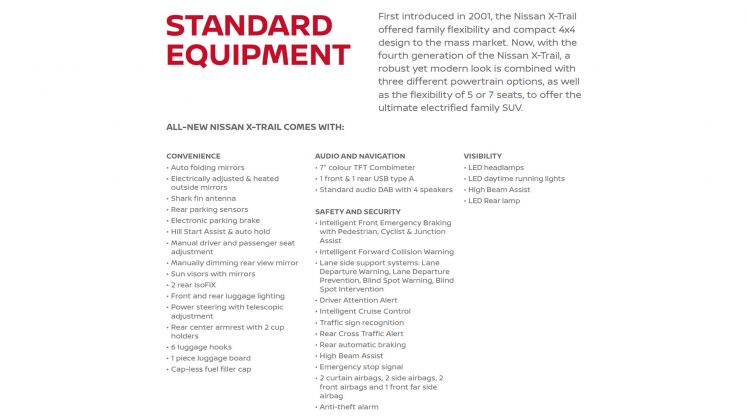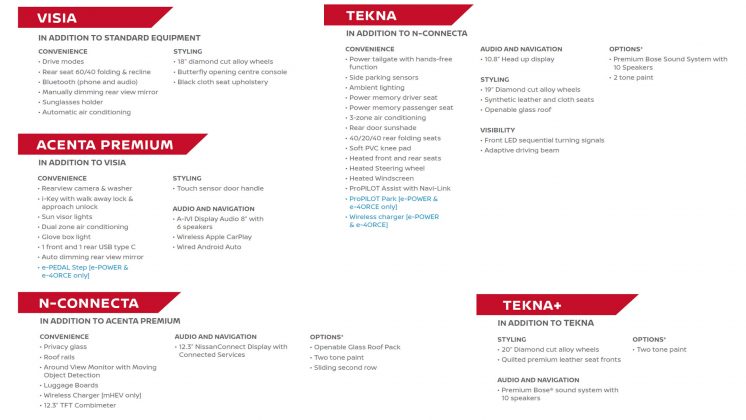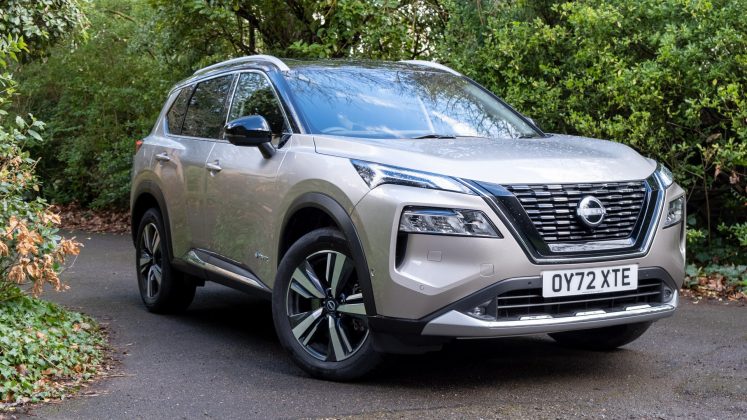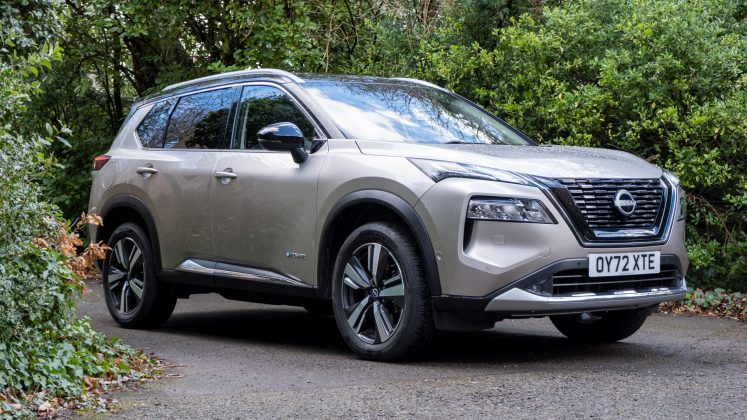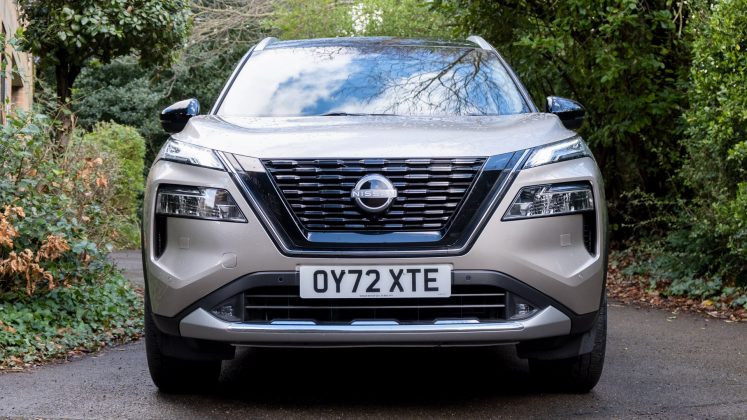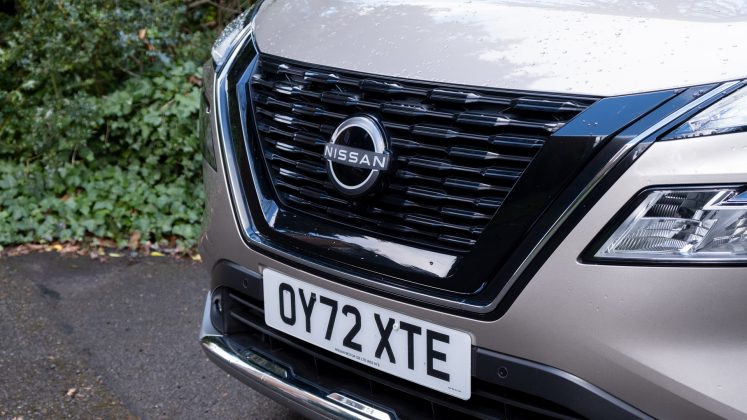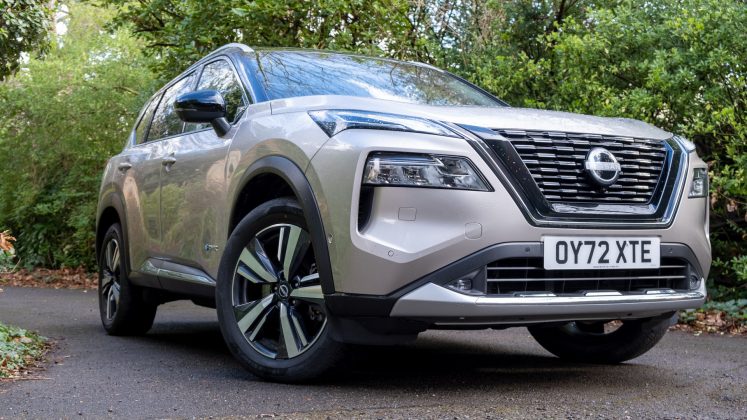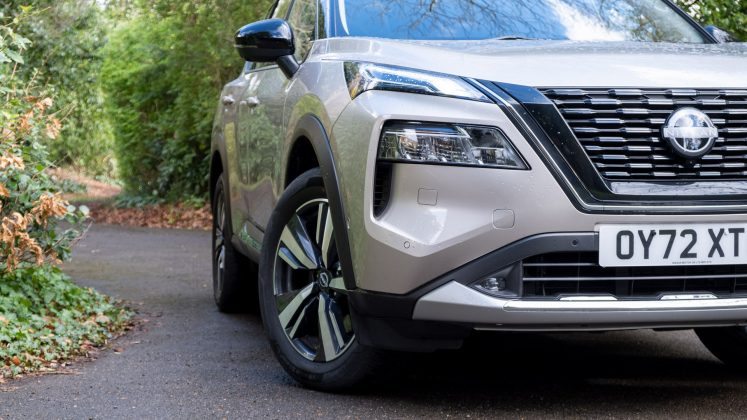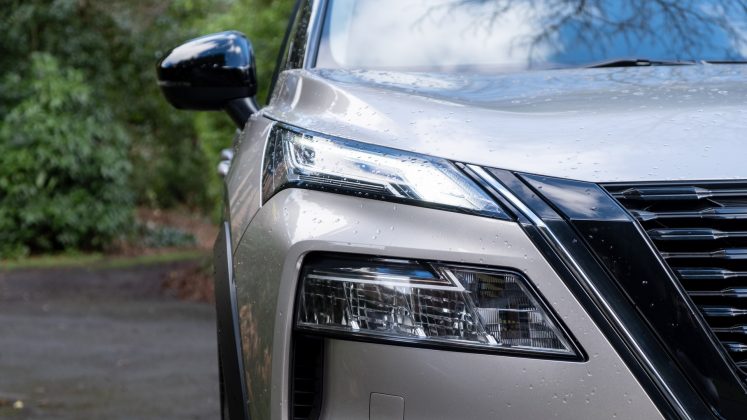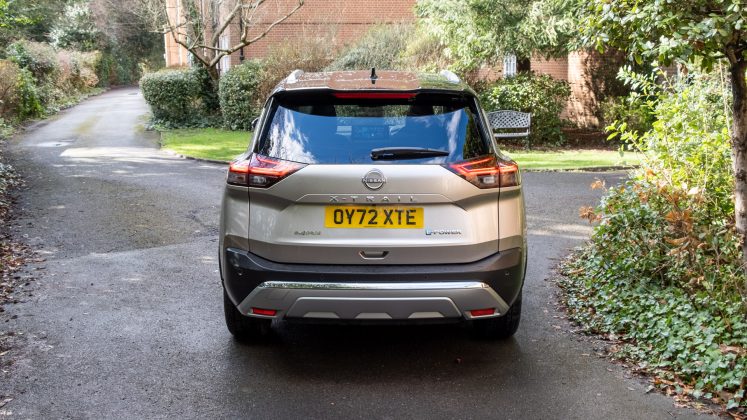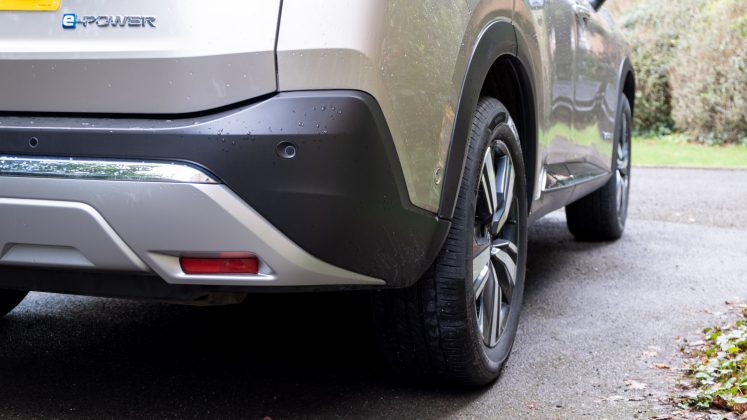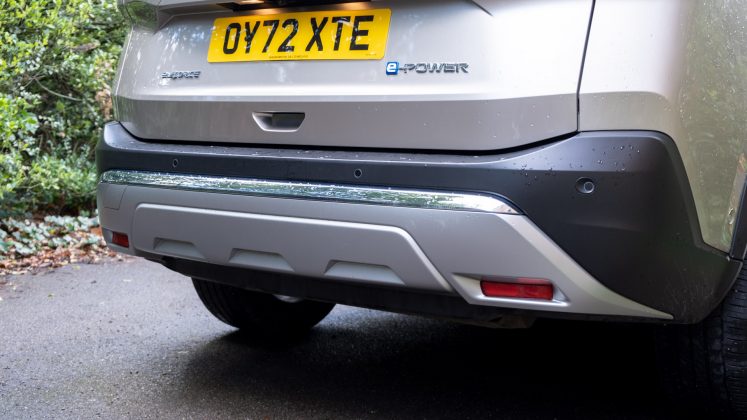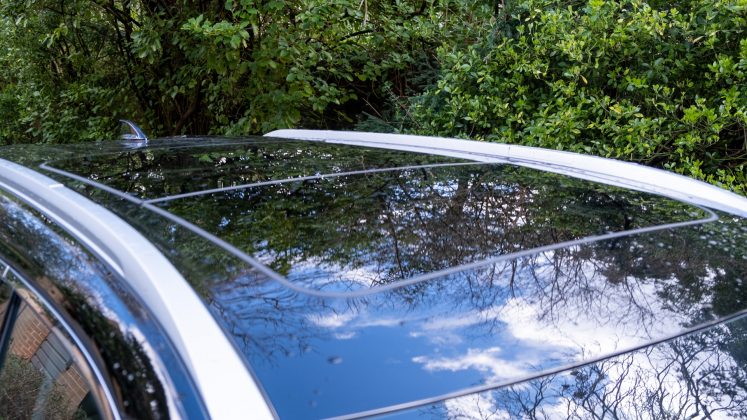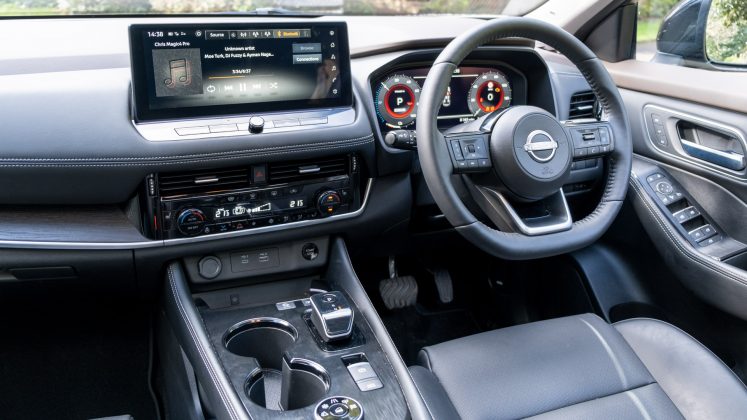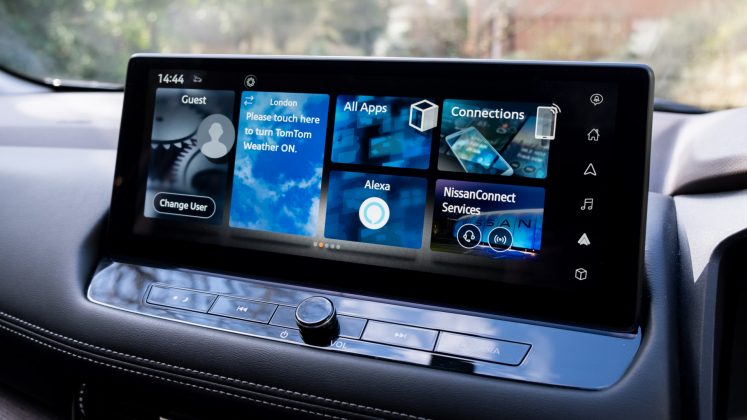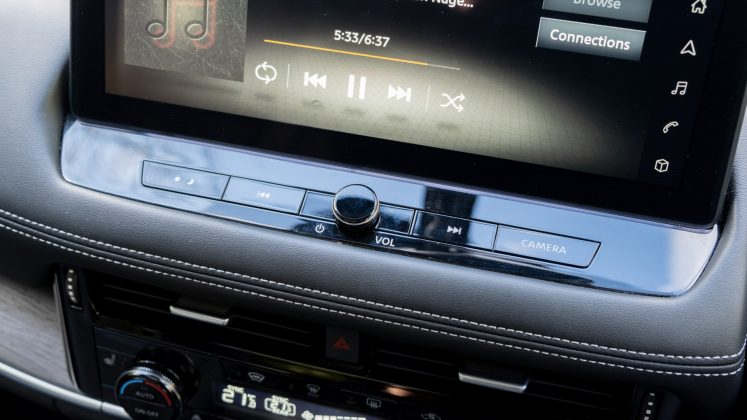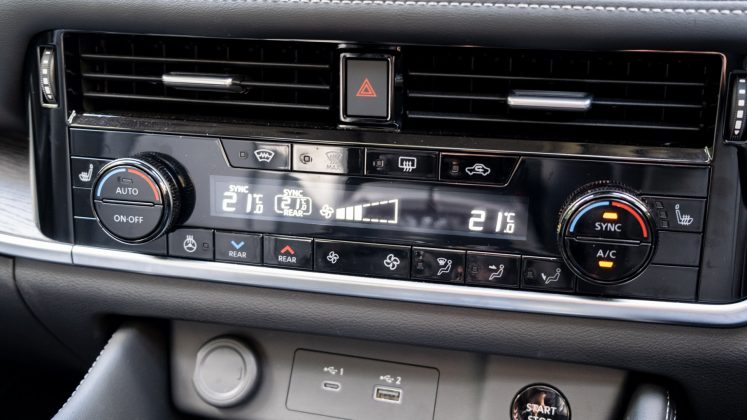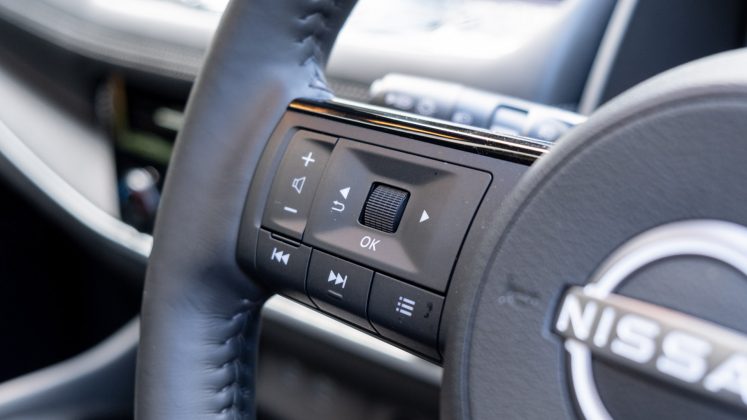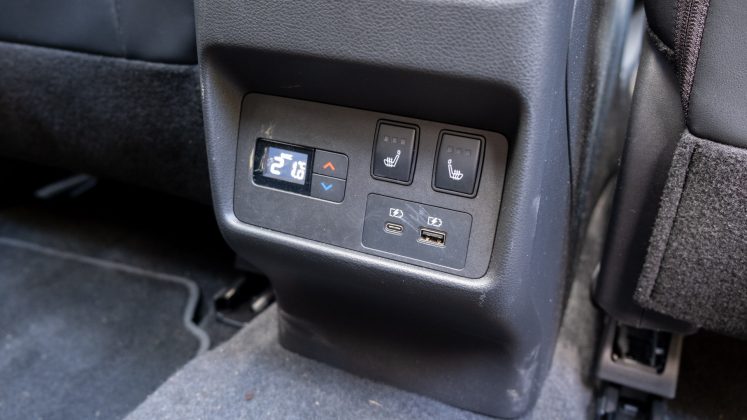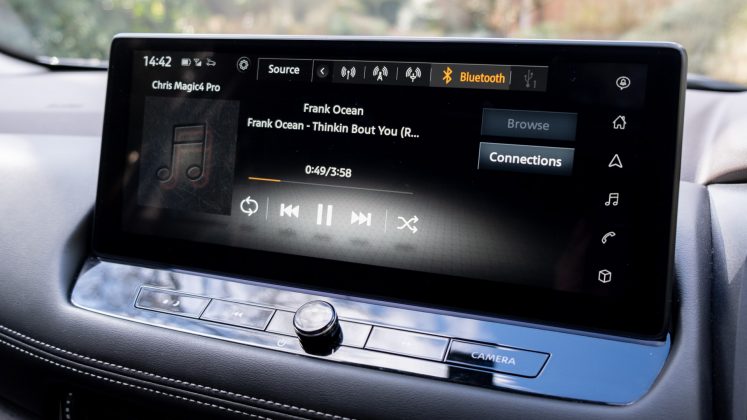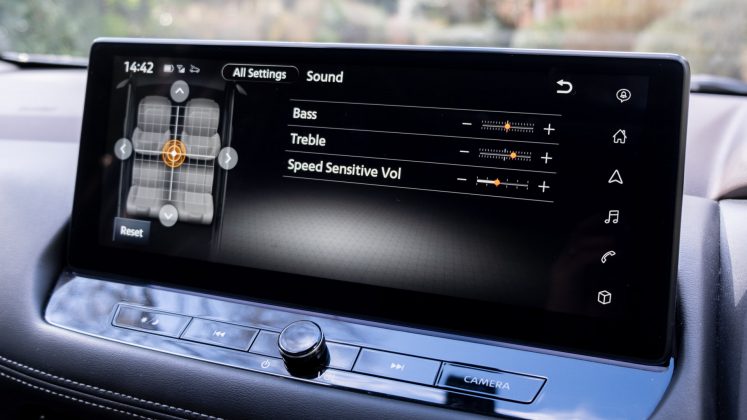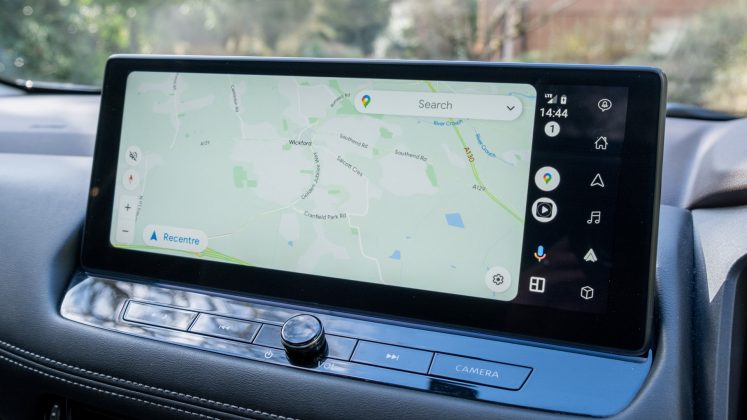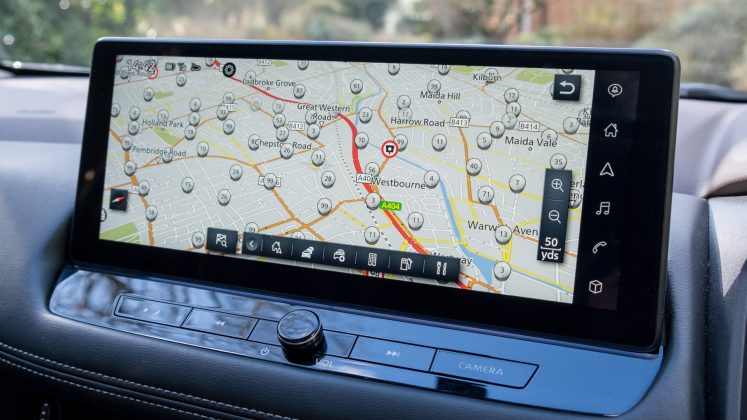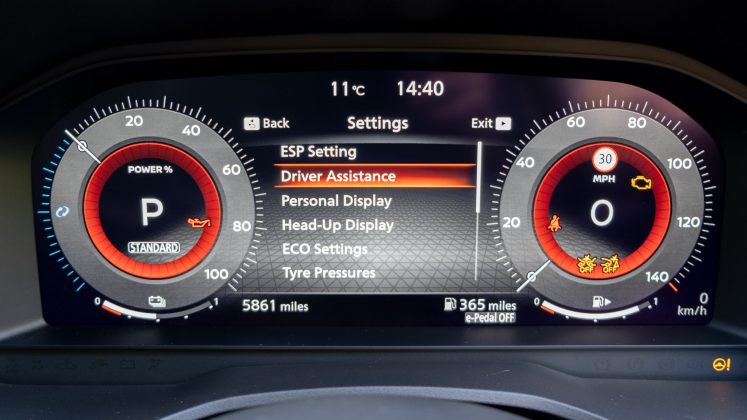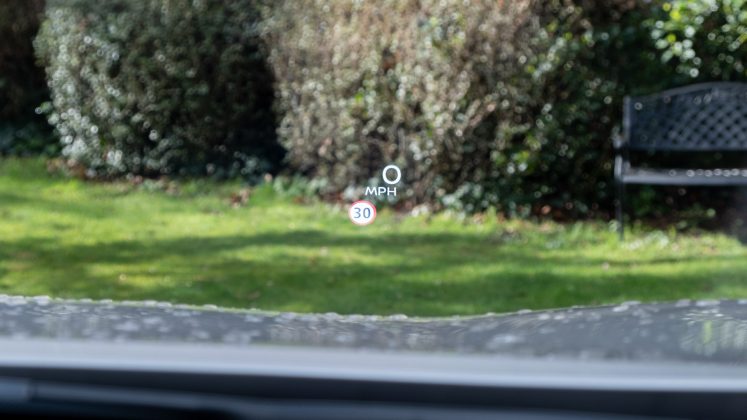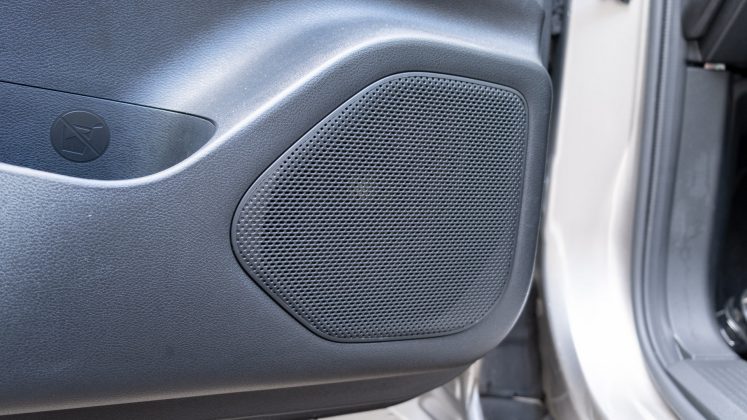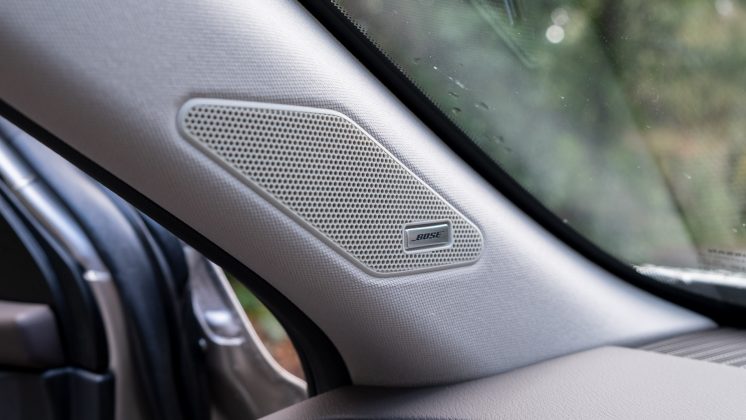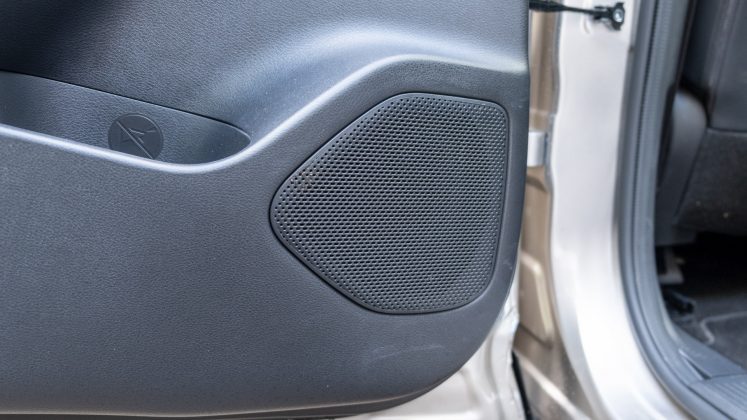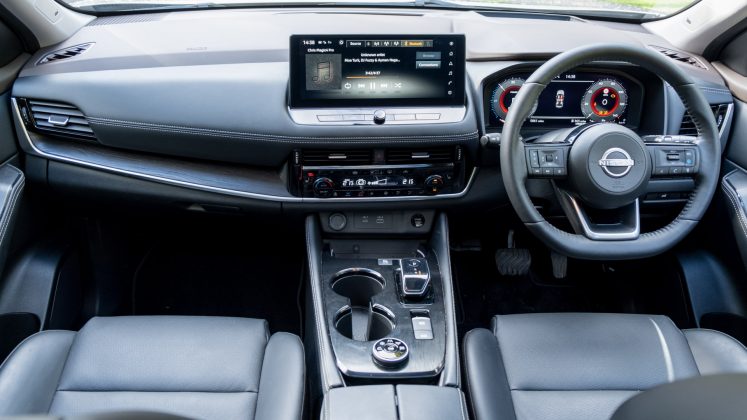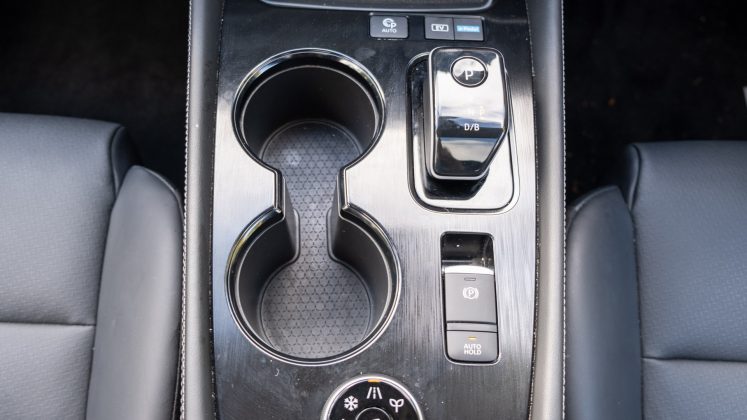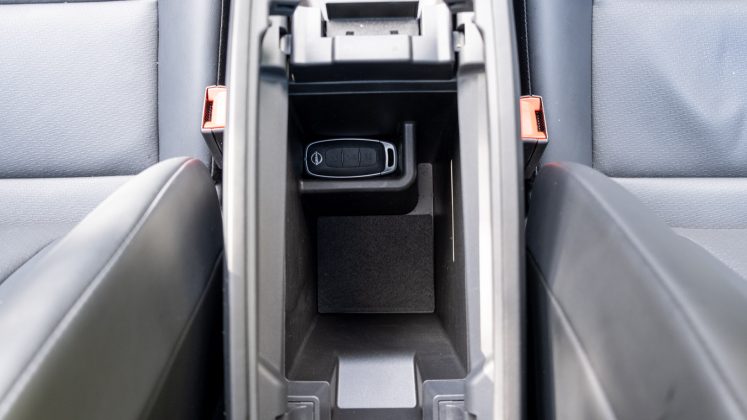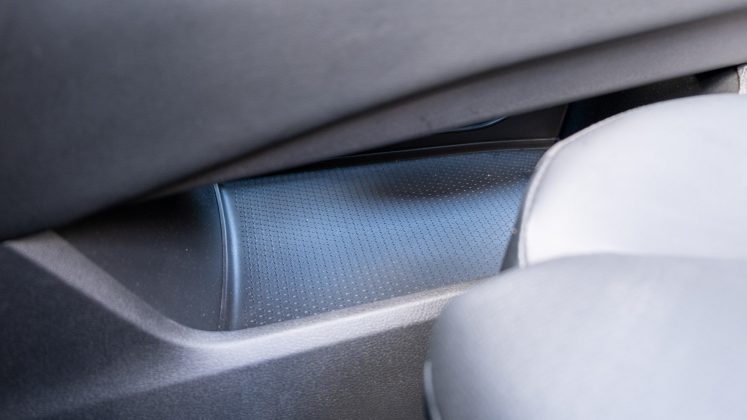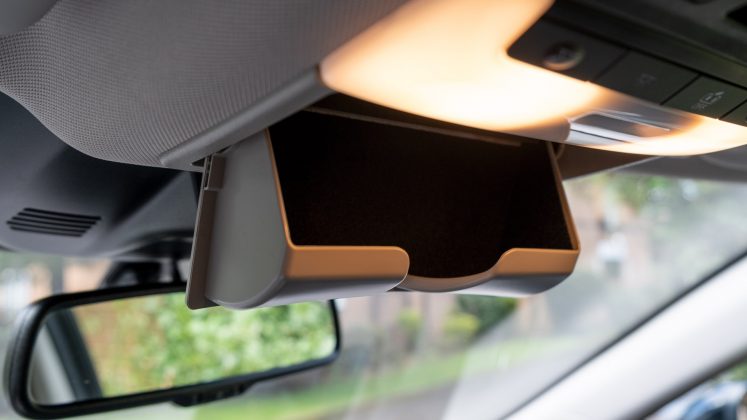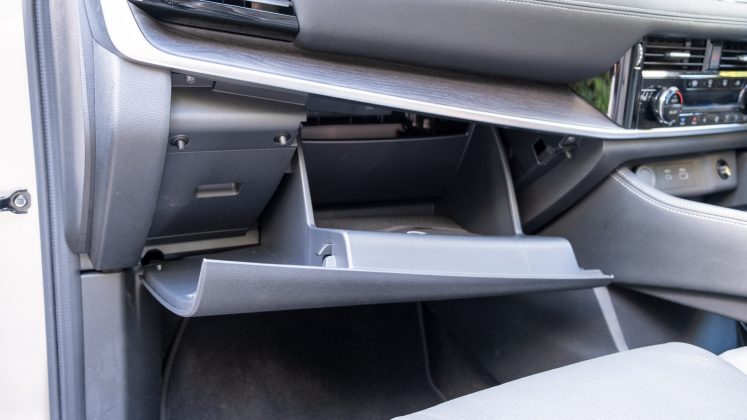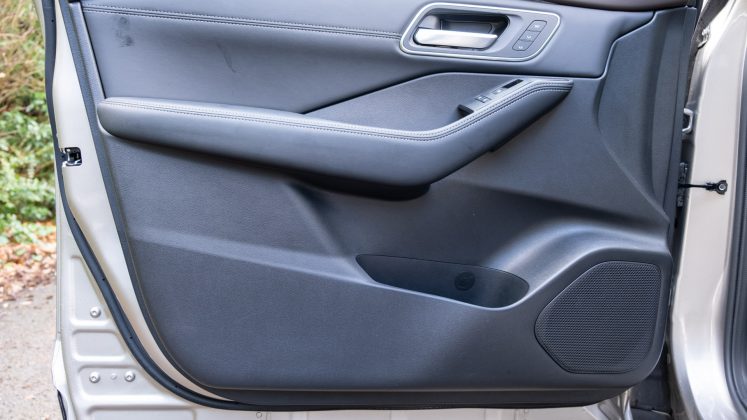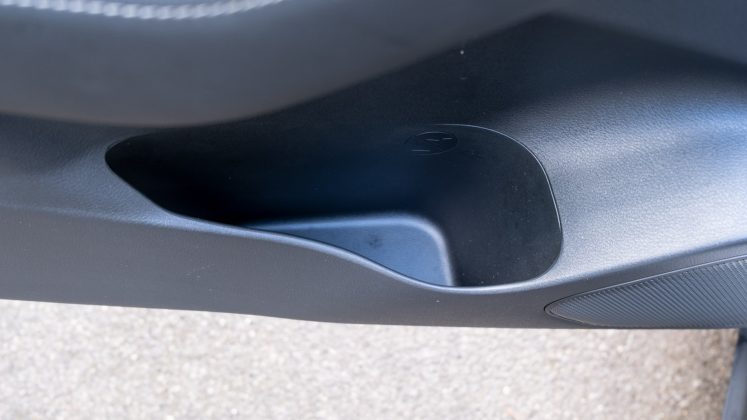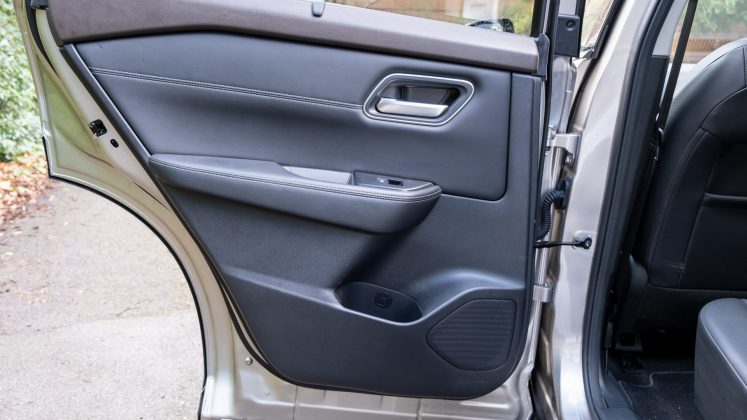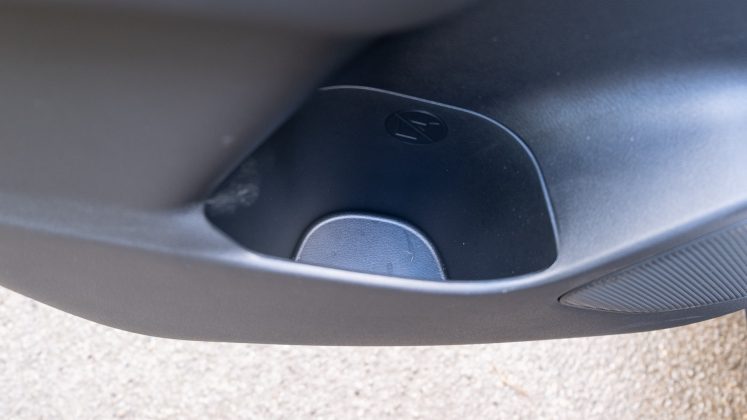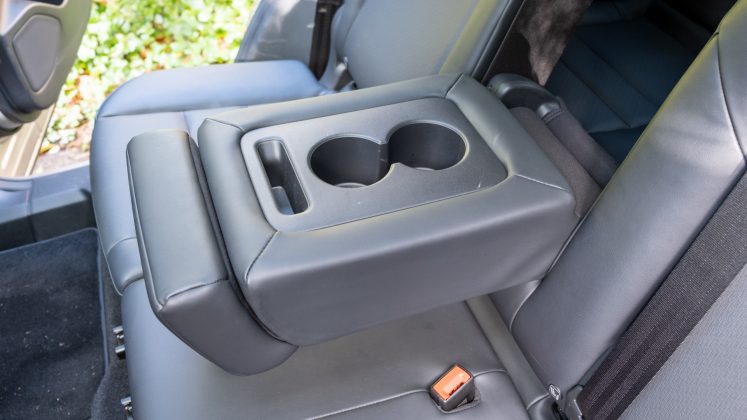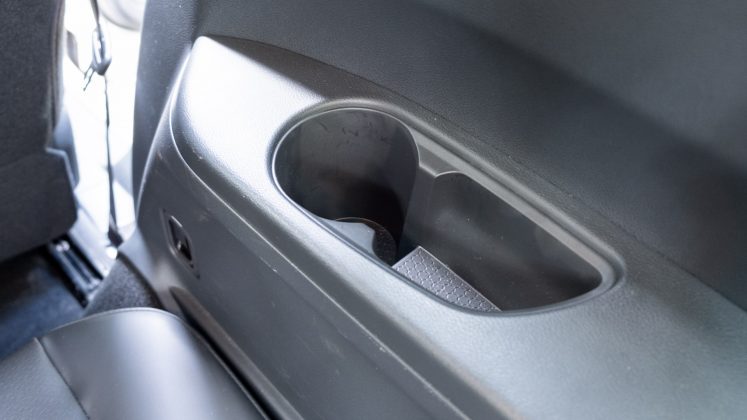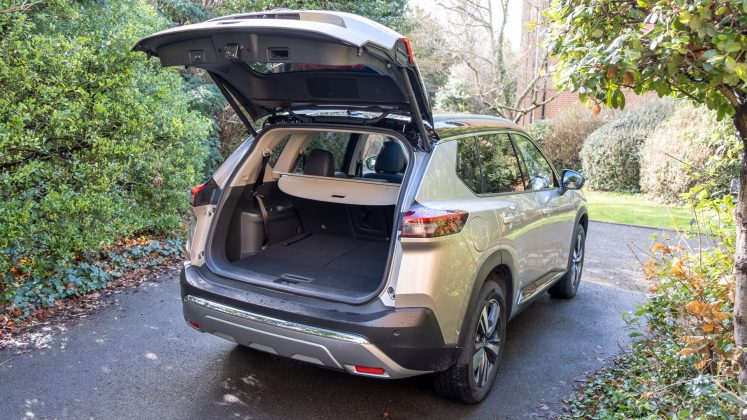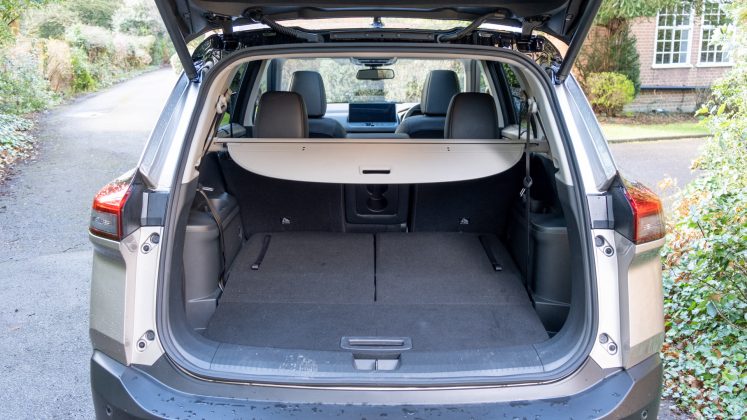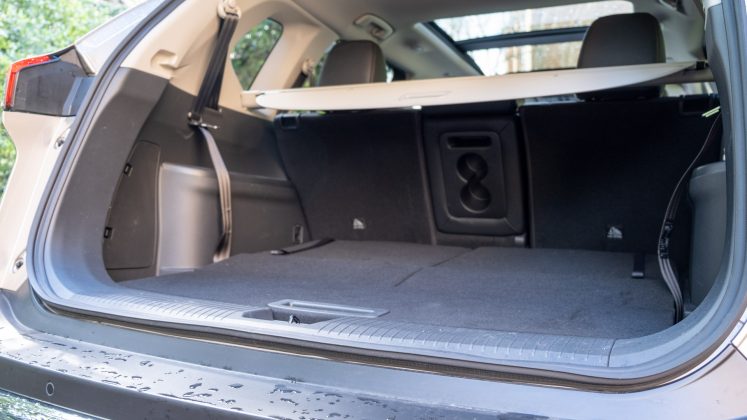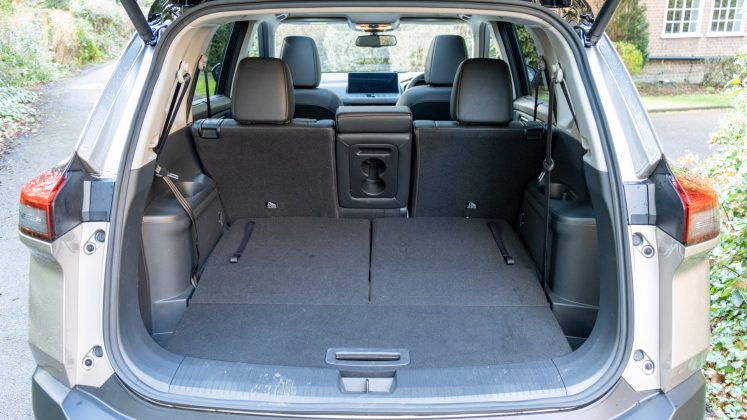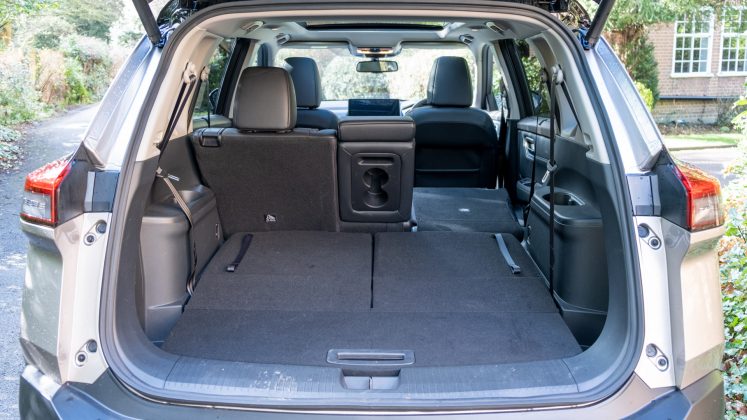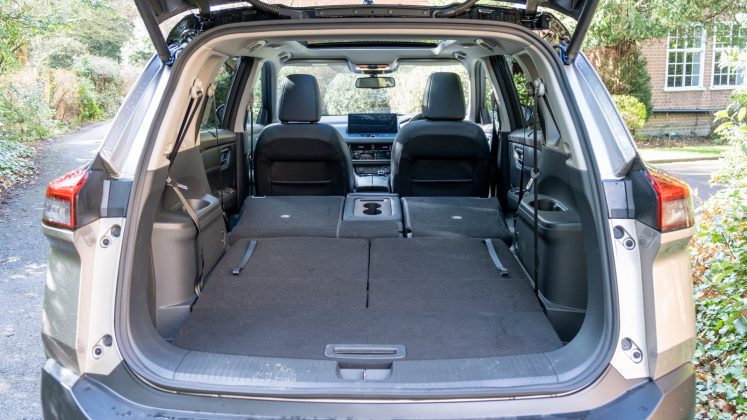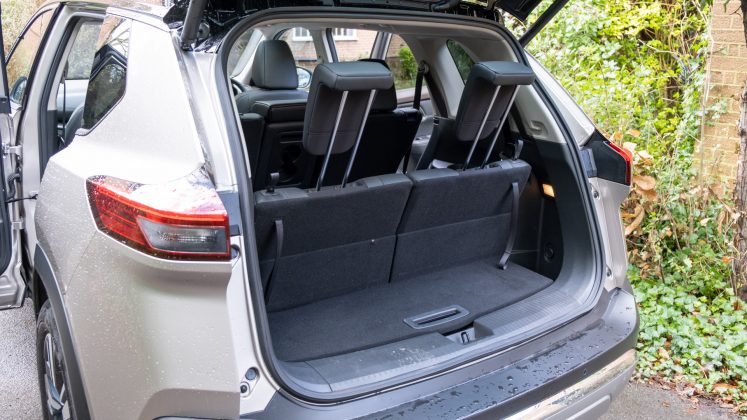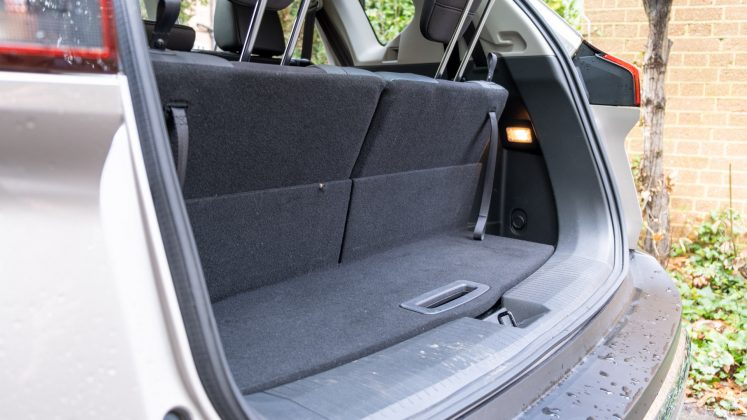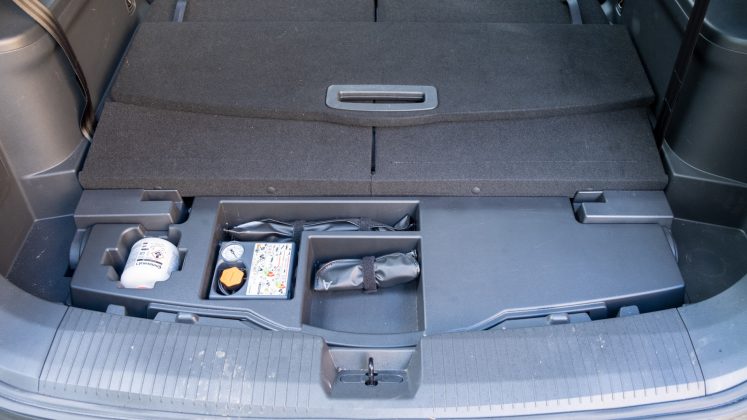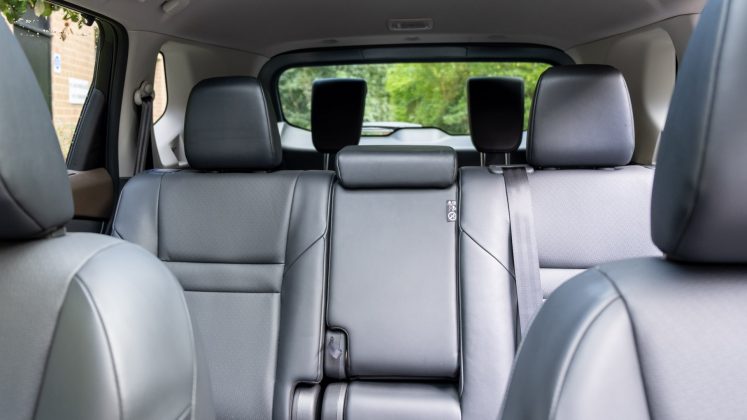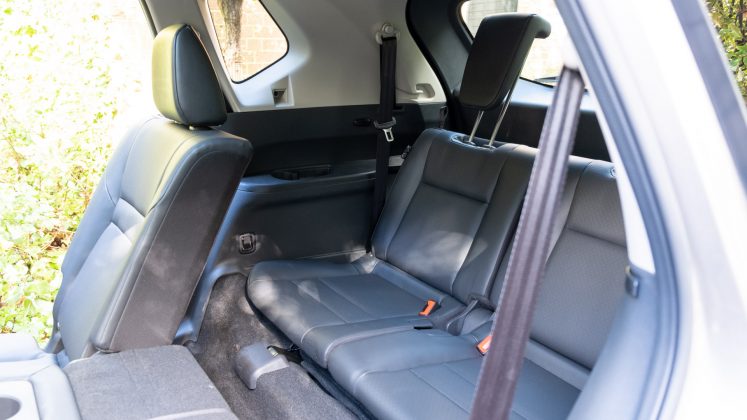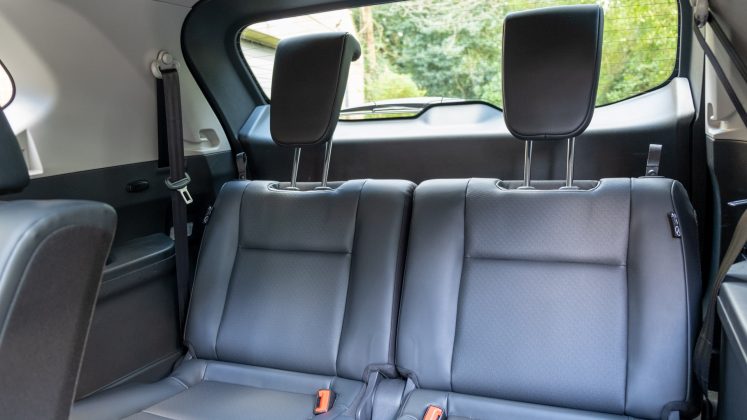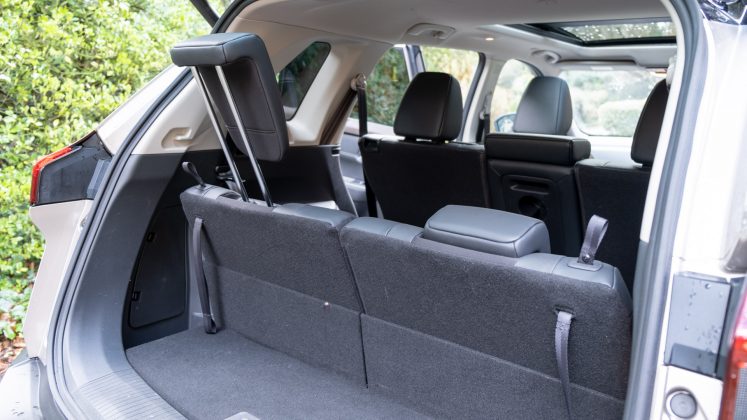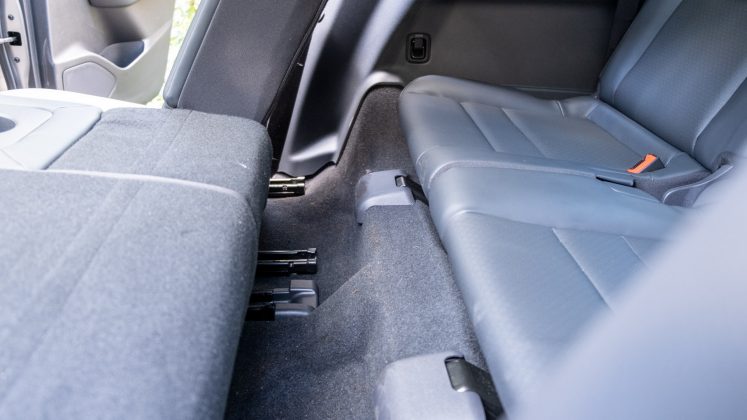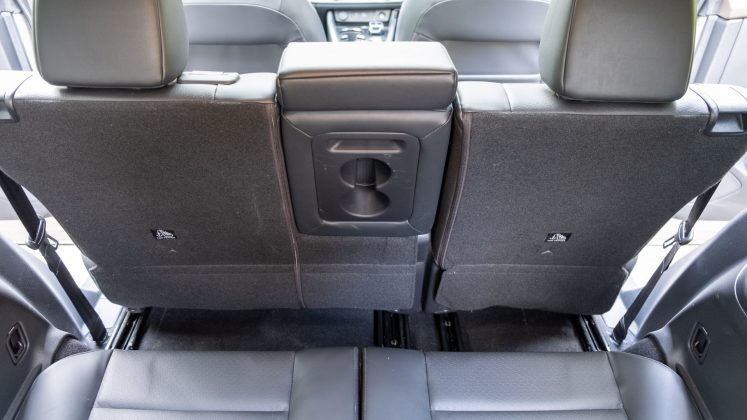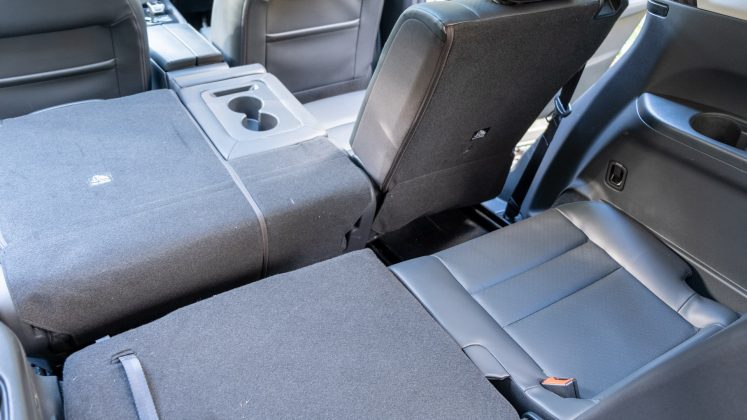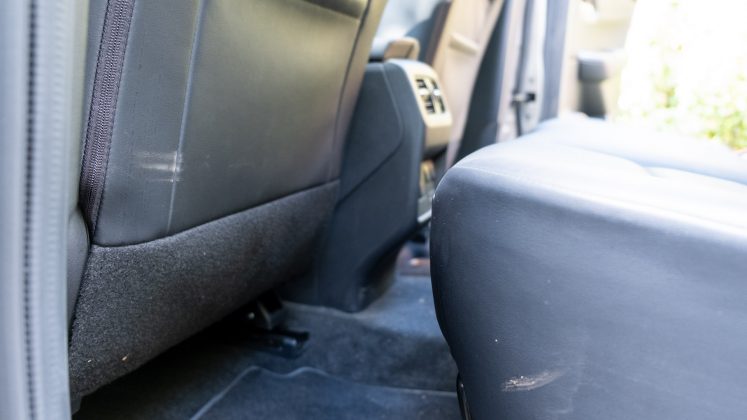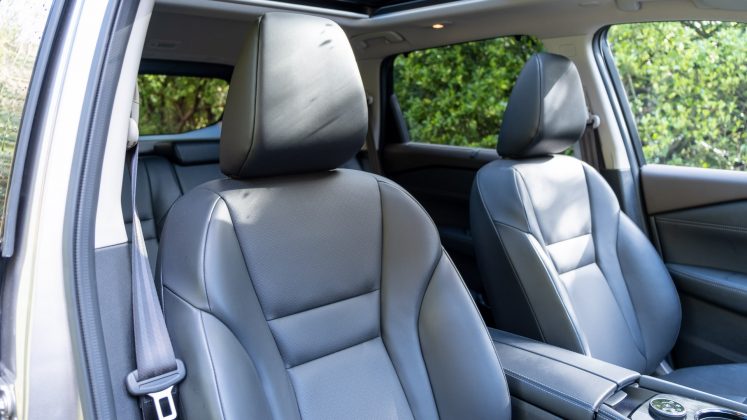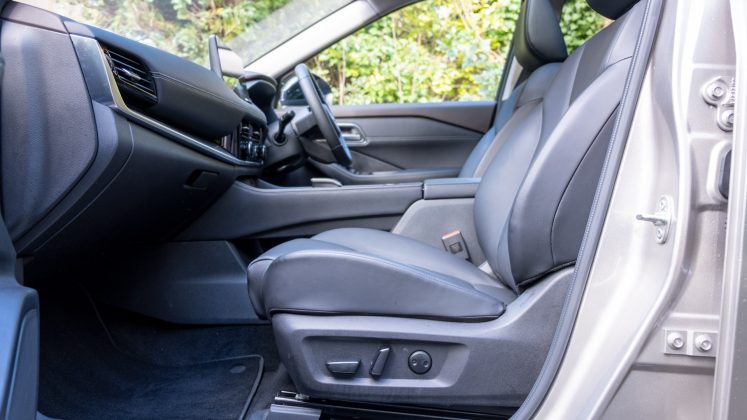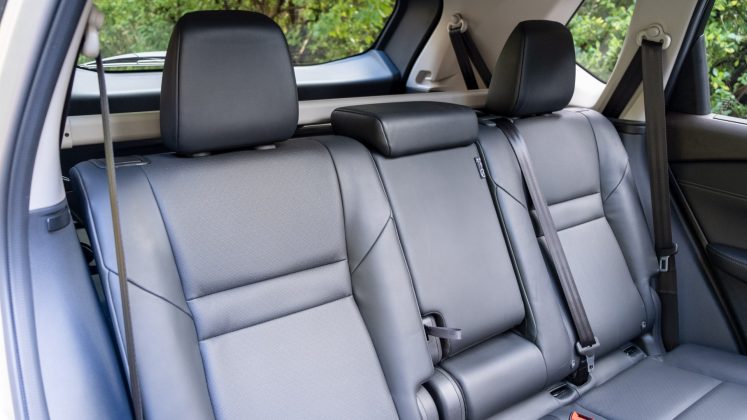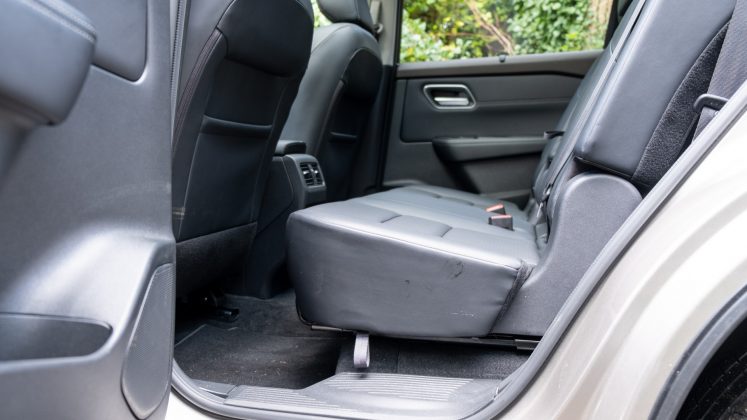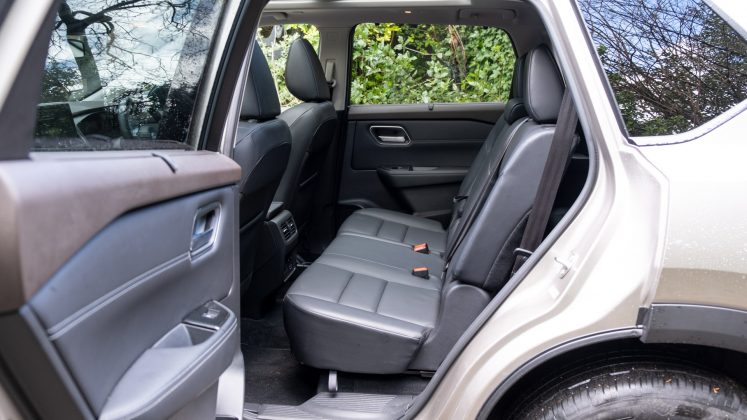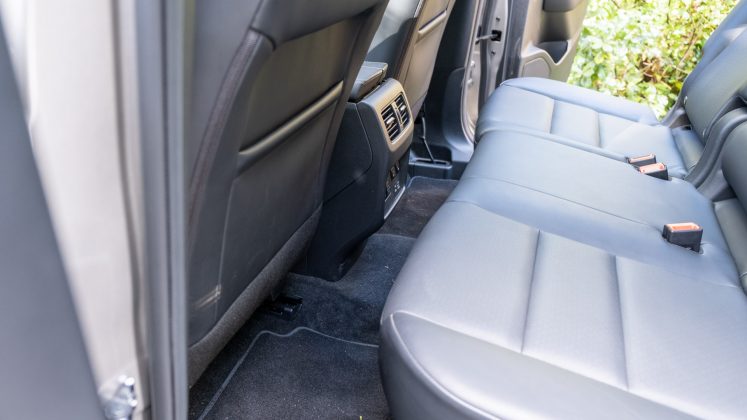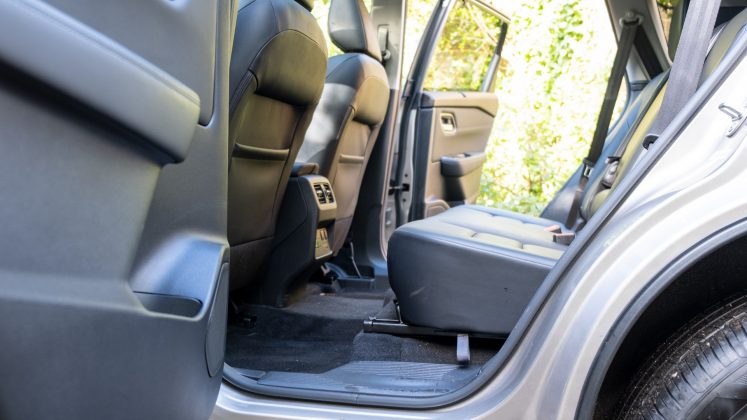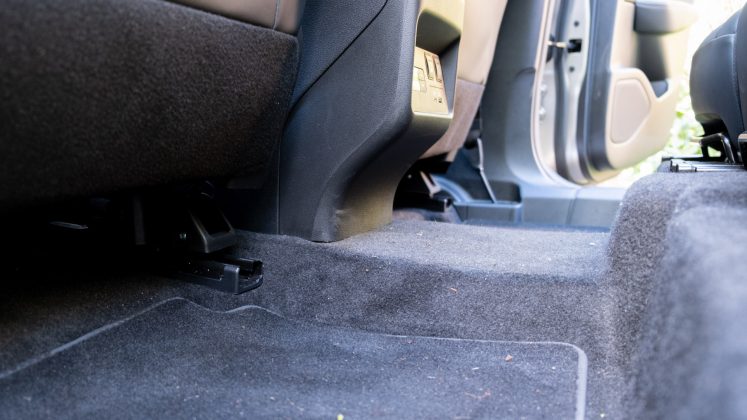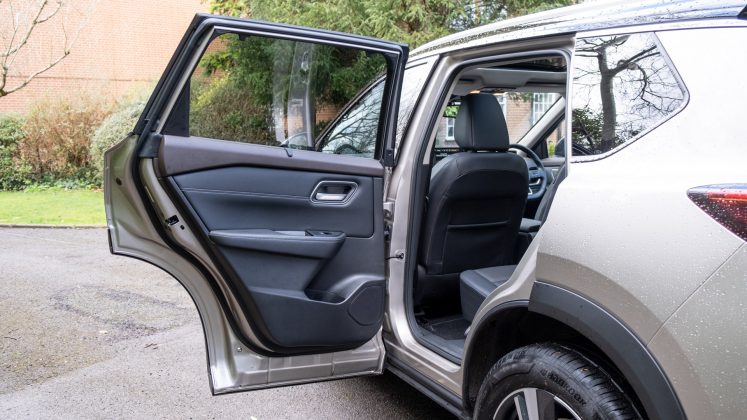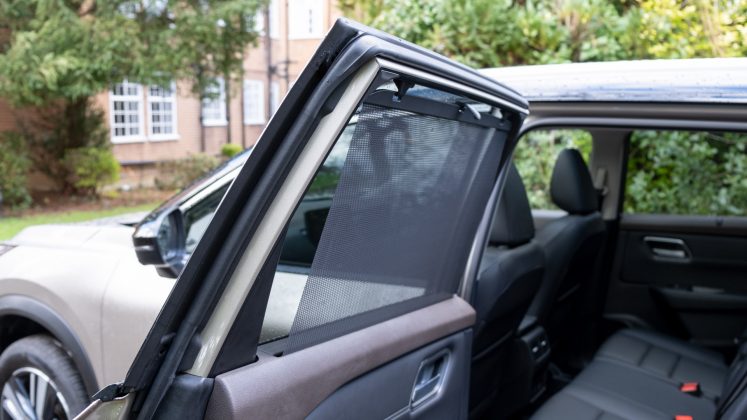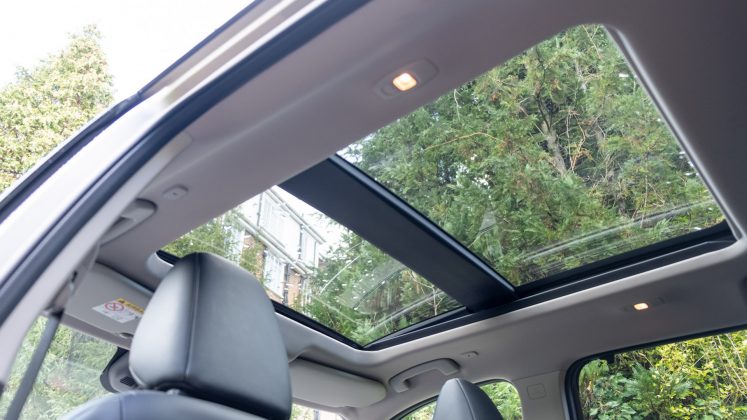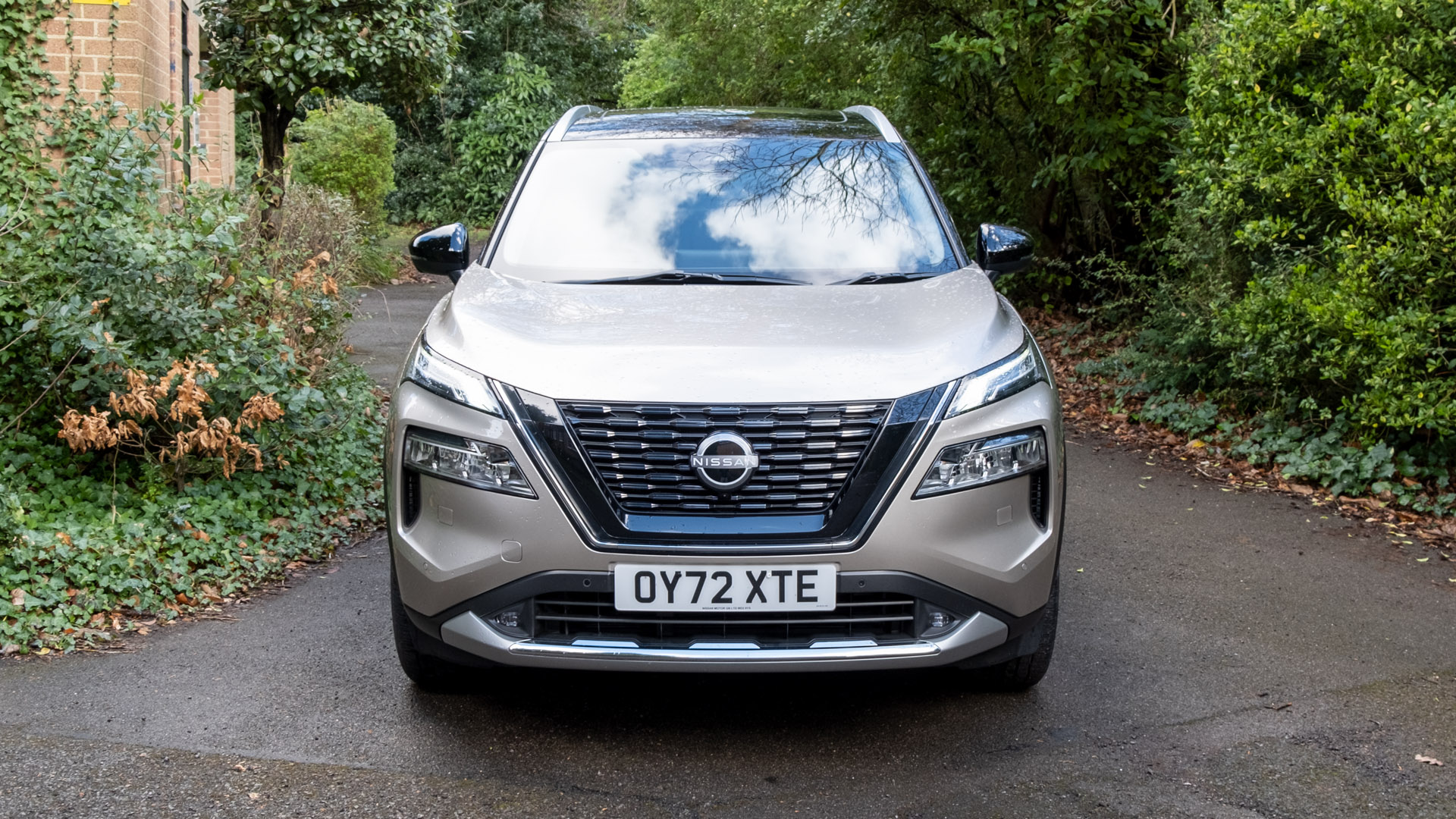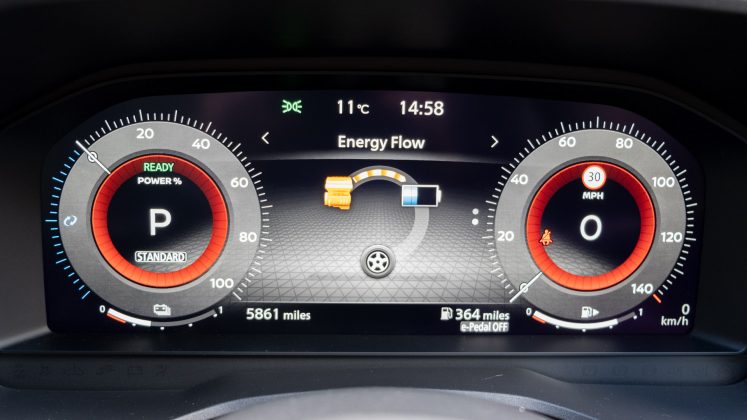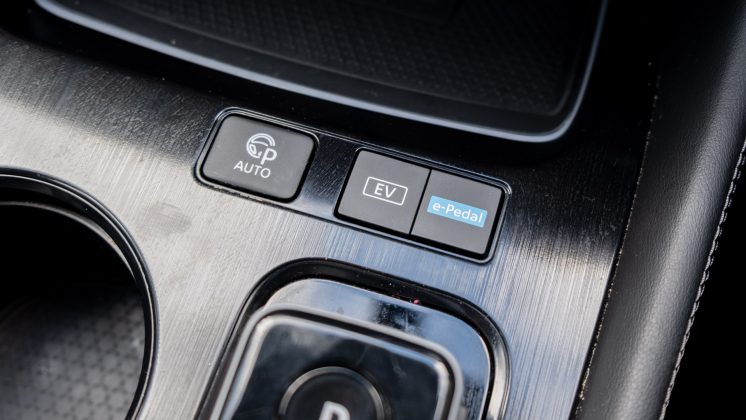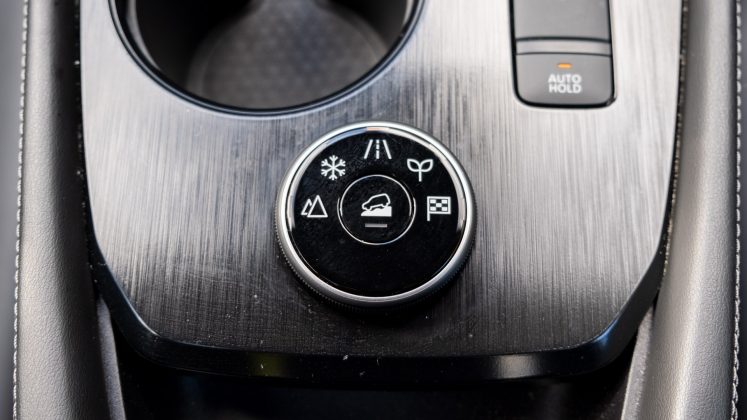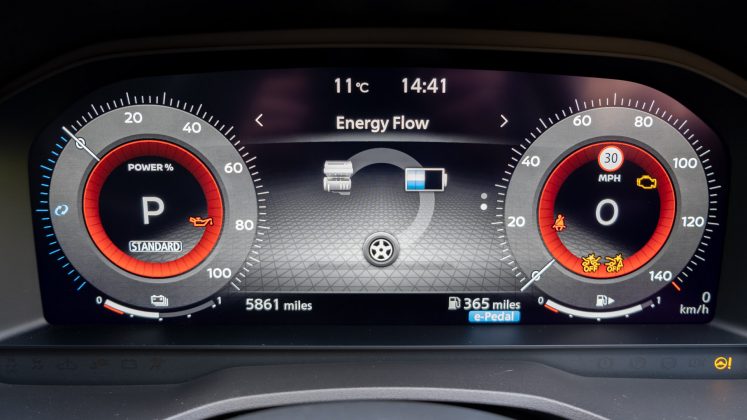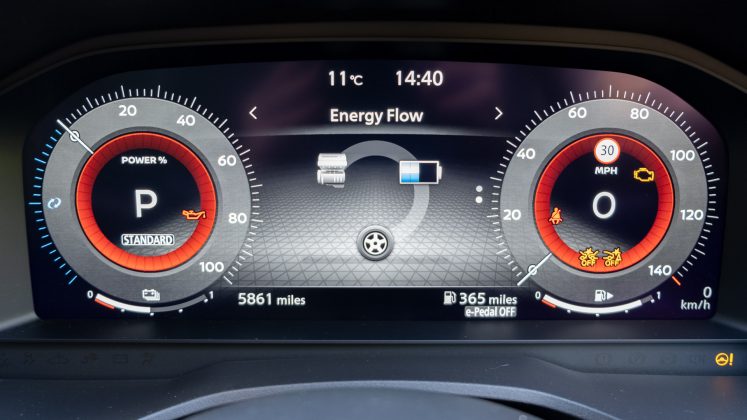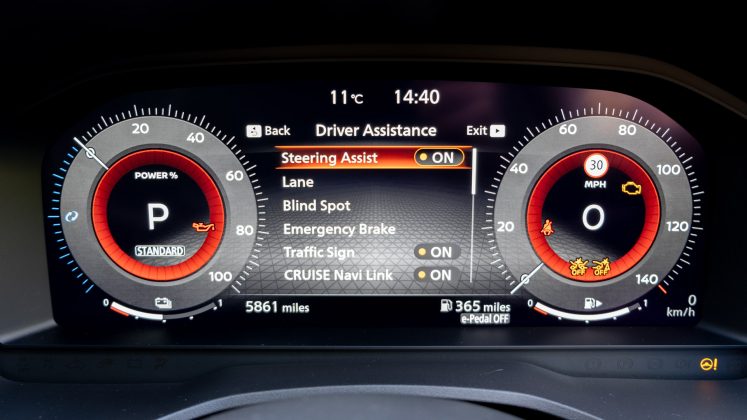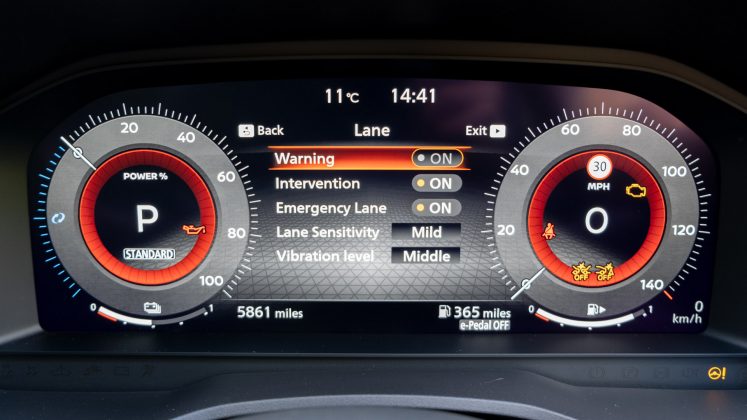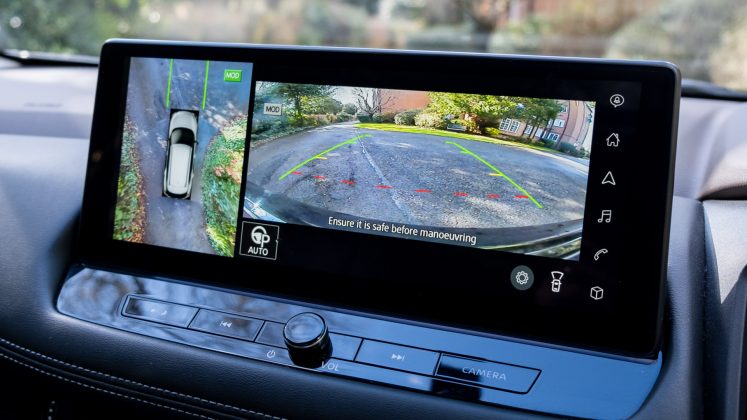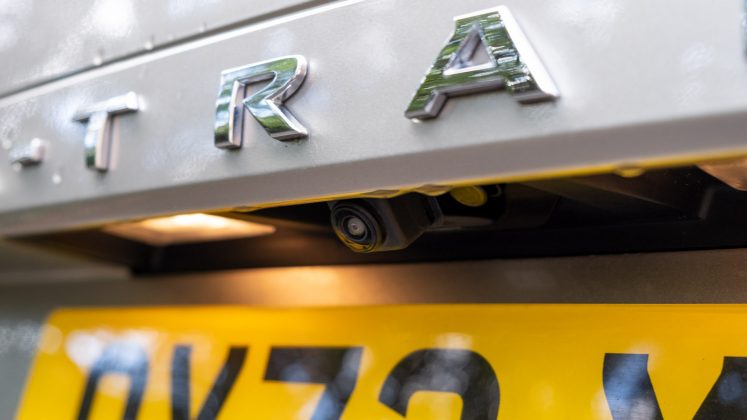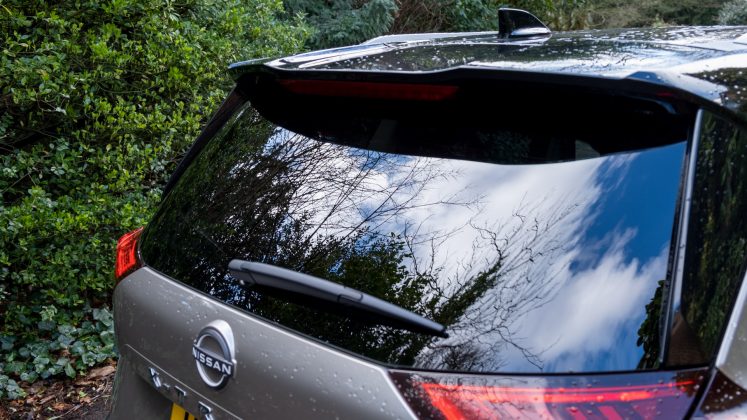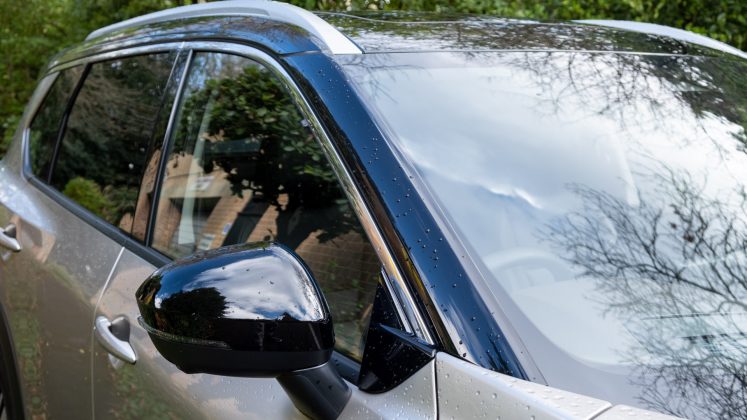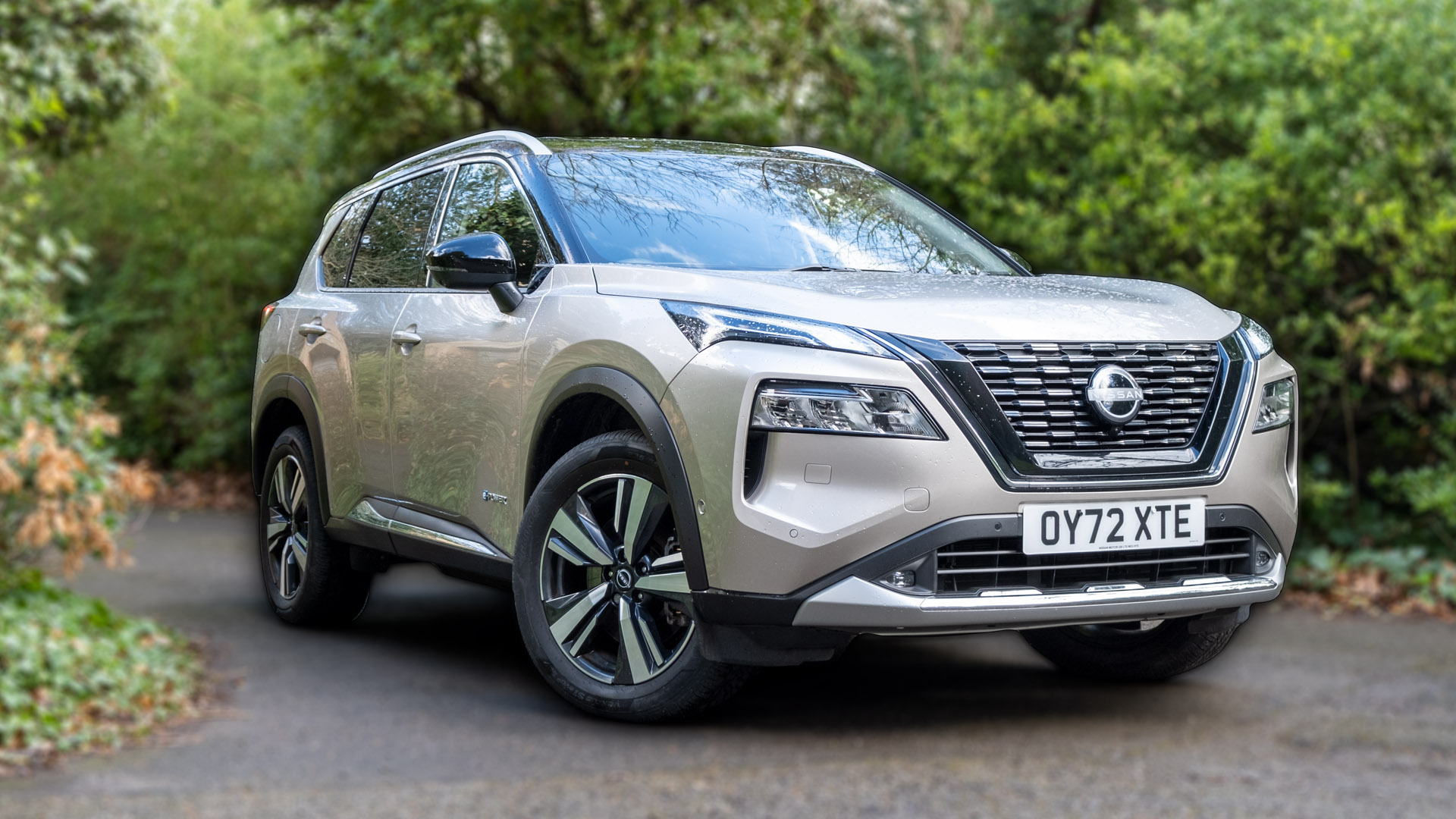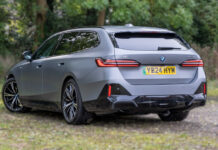The X-Trail is Nissan’s largest vehicle that it sells in its consumer fleet. Now in its fourth generation, it’s offered with different powertrains, including the manufacturer’s unique e-Power hybrid.
At the time of writing and in the UK, it’s available in over 22 different configurations, with two-wheel drive (2WD), four-wheel drive (4WD) e-4ORCE, e-POWER and MHEV models, and even as a five and seven-seater.
If you’d prefer to watch a review of the Nissan X-Trail, head on over to our YouTube channel.
Nissan X-Trail price & competition
To add to the complexity, there are five trim levels to choose from: Visia, which is solely available as a mild-hybrid electric vehicle (MHEV), the Acenta Premium, N-Connecta, Tekna, and Tekna+. A breakdown of the differences can be found below (click to expand):
Prices of the X-Trail start from £32,030 and extend up to £48,150. The e-Power models start from £36,140, and should you wish to get an e-Power seven-seater it’ll set you back £39,340. Despite the added premium for the e-Power model, the X-Trail is still among one of the most affordable larger-sized SUVs, especially if you consider the limited number of seven-seater alternatives on the market. The vehicle on review is the Tekna e-Power e-4ORCE 4WD seven-seater with an on-the-road price of £45,485 without options.
Find the best Nissan X-Trail deals
Speaking of which, here’s a selection of hybrid SUVs to consider: Honda HR-V from £29,410; MG HS Plug-in Hybrid from £30,095; Grandland X Hybrid from £32,390; Citroen C5 Aircross from £34,275; Citroen C5 X Hybrid from £36,470; Ford Kuga PHEV from £36,555; Peugeot 3008 Hybrid from £37,310; Audi Q3 TFSIe from £38,335; Kia Sportage PHEV from £40,400; Hyundai Tucson PHEV from £40,930; DS 7 Crossback E-Tense 4×4 from £41,550; Kia Sorento Plug-in Hybrid from £45,245; Suzuki Across PHEV from £46,629; BMW X3 xDrive30e from £50,600; Audi Q5 TFSIe from £51,015; BMW X5 xDrive45e from £66,415.
Buy a car phone mount on Amazon (Affiliate)
You might also want to consider a few of the fully electric alternatives: the MG ZS EV from £29,495; the Citroen e-C4 from £30,995; the Hyundai Kona Electric from £31,325; the Vauxhall Mokka-e from £32,695; the Peugeot e-2008 from £33,700; the Kia Soul EV from £34,995; the Kia Niro EV ‘2 64’ from £36,245; the Volkswagen ID.4 from £37,290; the Skoda Enyaq iV 60 from £38,380; the Hyundai Ioniq 5 from £41,900; and the Kia EV6 from £44,195. You’ve also got the MG5 EV, an all-electric estate that starts from £30,995.
Read next: Volkswagen ID.4 review: Better than the VW ID.3?
Nissan X-Trail exterior review
Despite coming in at the more ‘affordable’ end of the market, the Nissan X-Trail is a stylish addition to the market. It features the automaker’s V-shaped design at the front, a classy finish at the rear and a practical, yet snazzy side profile thanks to the inclusion of diamond-cut alloys that come fitted as standard on all trims.
As for the vehicle’s colour, there are a few variations with metallic finishes starting from £575 and extending up to £1,265 for a two-tone design. When it comes to towing, the X-Trail has got between 1,800-2,000kg of capacity in the MHEV models, and between 670-1800kg in the e-Power variants. Roof rails come fitted as standard in the N-Connecta trims, with the weight capacity rated by the manufacturer at 75kg.
Read next: Cupra Formentor e-Hybrid review: Better than BMW X2?
Nissan X-Trail interior review
Inside, the X-Trail isn’t as premium-looking as some of its rivals, but it’s still a cut-above cheaper alternatives. More importantly, however, it retains a practical design with a flurry of physical buttons littered around the cabin. Indeed, the climate and media controls are easy to access, while the controls on the steering wheel make it a breeze to adjust settings while on the move.
Onto the use of technology, it’s surprising that even in this day and age, the manufacturer has chosen to omit a centre display in its entry-level Visia trim. Thankfully, in all e-Power models, you’ll find either an 8” or 12.3” display that supports Android Auto and Apple CarPlay over a wired connection, with the latter system also working wirelessly. As for the driver’s display, there’s a part-digitalized 7” instrument cluster in the Visia and Accenta Premium models, while the N-Connecta trim and above sport a fully digitalized 12.3” display instead.
On the high-spec Tekna trims, you’ll also find a projected 10.8” Head-Up Display (HUD), which is a useful addition as it helps to keep your eyes planted on the road by displaying traversing speed and the safety systems that are in operation. However, it is a shame that both the driver’s display and HUD fail to feed through navigation data from the supported third-party operating systems.
As for the vehicle’s audio system, there are a measly four speakers found in the entry-level Visia, six in the Accenta Premium and N-Connecta and a 10-speaker Bose configuration in the Tekna trims. If you’d like to hear how the latter system performs, watch our detailed review on YouTube.
Nissan X-Trail storage review
When it comes to storage, the X-Trail offers plenty of space within the cabin. At the front, you’ll find a sunglass holder within the headliner, a handy non-slip bay at the top of the centre console for a smartphone that doubles up as a wireless charging bay in certain trims, a sizeable area under the centre console, a small compartment under the centre armrest, and a pulldown armrest with cupholders at the back.
Not all areas have been optimised, however, as the glove box hasn’t been catered for the right-hand drive market, while the cupholders found within the centre console won’t properly accommodate smaller-sized bottles or cups due to their widened design. Equally, it’s disappointing that none of the door bins have been lined in fabric and as a result, loose change and keys will be heard rattling about when traversing uneven terrain.
As for its boot, there’s 575 litres in the five-seater and 485 litres in the seven-seater models. With the seats dropped, this figure extends up to 1,396 and 1,298, respectively.
Here’s how the it stacks up to other electrified SUVs: Land Rover Discovery Sport P300e (1,179/1,794 litres); Tesla Model Y (854/2,100 litres); Skoda Enyaq iV (585/1,710 litres); VW Passat Estate GTE (483/1,613 litres); VW ID.4 (543/1,575 litres); Hyundai Ioniq 5 (520/1,587 litres); Skoda Octavia iV Estate (490/1,555 litres); Citroen C5 X Hybrid (485/1,580 litres); Citroen C5 Aircross (460/1,510 litres); Kia EV6 (490/1,300 litres); MG ZS EV (448/1,375 litres); Peugeot e-2008 (434/1,467 litres); Range Rover Evoque P300e (591/1,383 litres); Kia Soul EV (315/1,339 litres); Cupra Formentor e-Hybrid (345/1,475 litres); Suzuki Across PHEV (490/1,168 litres); Citroen e-C4 (380/1,250 litres); BMW X2 xDrive 25e (410/1,290 litres); Nissan Juke Hybrid (354/1,237 litres); Honda HR-V (320/1,290 litres); Hyundai Kona Electric (332/1,114 litres); Vauxhall Mokka-e (310/1,060 litres). As for the MG5 EV estate, it offers 479 and 1,367 litres, respectively.
In terms of practicality, the X-Trail has 60:40 rear-split folding seats but this does change to a 40:20:40 design in the Tekna trims, making it handy to transport elongated goods. Equally in the more premium models, you’ll find an electronically-operated tailgate. No matter which model you opt for or seating configuration, the vehicle has a wide-opening hatchback design, a flat loading bay, a small underfloor compartment, and a retractable and removable boot load cover, which can be stored behind the rear seats when it’s not in use.
Read next: Skoda Enyaq iV review: The Volkswagen ID.4 alternative
Nissan X-Trail comfort review
Should you opt for the seven-seater, you’ll find that the sixth and seventh seats unsurprisingly eat up storage space, leaving you with only a small area for one or two carry-ons. Nonetheless, one can still store the retractable boot load cover in this area – showing that the manufacturer has carefully thought through its design.
This brings us to seating. The X-Trail is available as a five and seven-seater, with the latter being somewhat of a novelty in the electrified market. Consider, however, that if you want Nissan’s e-Power technology and need those extra two seats, you’ll be forced to get the four-wheel-drive (4WD) model. Oddly, the MHEV is available as a seven-seater in the 2WD configuration.
Find the best Nissan X-Trail deals
Given the rear two seats are positioned all the way at the back, it should come as no surprise that both headroom and legroom are limited. Even with the seats in the second row moved forwards, adults will struggle to fit comfortably. Thankfully, this shouldn’t pose a problem for children. Despite the limited space, these seats are still quite cushiony and soft thanks to their padded design – no one will mind sitting here for a prolonged amount of time.
Similarly, the seats in the second and first row are all soft and accommodating; 6-foot 2-inches (188cm) individuals won’t have an issue within the X-Trail’s cabin, especially given that the rear seats have a reclining function fitted as standard across all trims. It’s also great to see that the automaker has tried to optimise the fifth seat by minimising the size of the transmission tunnel, and has provided wide-opening front and rear doors, which make it easy to access the cabin.
In terms of your seating controls, the front two are manually operated only but in the Tekna trims, you’ll be treated with a power memory function, heated front and rear seats, a heated steering wheel and windscreen, sunshades for the rear windows and an openable glass roof with a retractable sunshade fitted as standard.
As for cabin noise, the X-Trail isn’t too shabby at lower speeds but does suffer a little at higher speeds and when driving on rougher terrain. You can find in-cabin sound measurements on our dedicated audio review.
Nissan X-Trail performance review
To aid the driving experience, Nissan has integrated a soft suspension setup. It does a valiant job of reducing that see-sawing effect when going over speed bumps in the city, however, struggles when faced with a multitude of potholes or anomalies. The X-Trail feels a bit too bouncy and jittery for our liking. Granted, it’s more comfortable than sportier SUVs, but it’s still not quite what we had in mind for a family-sized SUV; it’s certainly no match for the Citroen C5 X Hybrid or others that integrate an adaptive air suspension system.
Given its configuration, the X-Trail suffers from body lean when cornering at speed. Even though e-4ORCE 4WD technology helps to stabilise the vehicle, Nissan’s SUV is still not best suited for spirited drivers. However, that’s not to say it’s a slow vehicle, far from it. Using Racelogic’s Performance Box Touch, we had the most powerful 4WD e-Power e-4ORCE tested from 0-20mph in 2.04s, 0-30mph in 3.02s, 0-60mph in 7.01s and from 50-70mph in just 3.44s. Max speed is rated at 111mph.
This is the result of the front and rear-mounted motors combining to provide 211 hp (157 kW) of power and a sizable 525 Nm (330 Nm front and 195 Nm rear) of torque. The 2WD/FWD e-Power models, which house a singular front-mounted motor output 201 hp (150 kW) of power and 330 Nm of torque instead. The MHEV models rely solely on the front-mounted 1.5-litre variable compression ratio turbocharged three-cylinder for power. As such, these non-e-Power models output 161 hp (120 kW) and 300 Nm of torque.
No matter which model you pick, you’ll find Nissan’s Xtronic Continuously Variable Transmission (CVT), therefore meaning you don’t have to rely on shifting through the gears but equally don’t have the means of selecting your preferred level.
Buy a car phone mount on Amazon (Affiliate)
Now you might wonder why we’ve not referenced the engine when it comes to power delivery in the e-Power models. The reason is quite simple, in said models, it’s not connected to the drivetrain. Instead, the engine solely acts as a generator for the small-sized battery, which in turn provides power to the electric motor(s).
It’s certainly an odd configuration and one that differentiates itself from other hybrids on the market, but according to the manufacturer this has been done to provide a seamless EV-driving experience at all times. At no point do you have to wait for the engine to kick in or worry about the transition between electric and petrol power delivery. In some ways, it’s like driving an EV at all times but without having to worry about replenishing the vehicle’s batteries, as in the Nissan X-Trail, it’s always topped up by the generator.
It is worth highlighting that if the battery is fully topped up, the vehicle will operate in EV mode only. You can also force it to run in pure electric mode at any time by pressing the dedicated EV button found on the centre console, however, this will only last you a couple of miles before the generator is required to recharge the battery.
So, how does the automaker’s clever technology affect fuel efficiency? Well, in our mixed driving tests, we netted 42.6 MPG, which is neither an impressive figure nor one that is offensive. Note, if you are to mainly drive on the motorway, this figure will drop to around 38.9 MPG.
To put its mixed driving figure into perspective, along the same test route the Citroen C5 X Hybrid attained 74.2 MPG, the Cupra Formentor e-Hybrid 64 MPG, the VW Passat Estate GTE 60-65 MPG, the Citroen C5 Aircross Hybrid 58 MPG, Suzuki Across PHEV 55-61 MPG, the Skoda Octavia iV Estate, Honda HR-V 55 MPG, the Range Rover Evoque P300e 40 MPG, the BMW X2 xDrive 25e 39 MPG, the Nissan Juke Hybrid 35-40 MPG, the Jeep Renegade 4xe attained 36 MPG and the Land Rover Discovery Sport P300e a measly 35 MPG.
Indeed, the X-Trail sits towards the bottom half of the tested hybrids, which means if you want to better fuel efficiency you might want to consider the other alternatives, albeit the ones mentioned are not offered as seven-seaters.
Nonetheless, we would like to commend the manufacturer for its transparency with its fuel efficiency claim, as the official WLTP mixed driving figure sits at 44 MPG; many of its competitors grossly inflate their claims to attract customers.
Now to be as efficient as possible and to maximise electric range, you might want to shift to B-mode via the gear selector or enable e-Pedal mode by pressing the button found beside it. Both will provide some degree of regenerative braking, with the latter being the harsher out of the two and overriding the former mode. Unfortunately, Nissan loyalists will be disappointed to learn that one can’t drive with a singular pedal in e-Pedal mode; meaning you’ll have to resort to using the physical brake pedal to come to a complete standstill. Furthermore, you’ll also have to initiate either B- or E-Pedal mode each time you power on the vehicle, which is rather cumbersome.
As for total driving range, on a full tank of petrol, you should be able to attain around 400 miles from its 55-litre tank without having to stop to refuel. Of course, this is dependent on how and where you drive, so expect a bit of variation.
Read next: Citroen C5 X review: Hybrid perfection?
Nissan X-Trail safety review
When it comes to crash safety, the X-Trail received a full 5/5 stars by Euro NCAP. It scored an impressive 91% in Adult Occupancy, 90% in Child Occupancy and a whopping 95% in the Safety Assist tests.
From testing, it’s clear to see why the vehicle excelled in the latter tests, as the manufacturer has included a plethora of driver assistance systems as standard across all trim levels; you’ll find: Intelligent Front Emergency Braking with Pedestrian, Cyclist & Junction Assist, Intelligent Forward Collision Warning, Lane side support systems: Lane Departure Warning, Lane Departure Prevention, Blind Spot Warning, Blind Spot Intervention, Driver Attention Alert, Intelligent Cruise Control, Traffic sign recognition, Rear Cross Traffic Alert, Rear automatic braking, High Beam Assist, and Emergency stop signal.
We were particularly fond of the adaptive cruise control, which not only correctly regulated the distance from the leading vehicle but also provided a smooth experience while on the motorway. It’s bettered in the Tekna trims, which add ProPILOT Assist with Navi-Link that adds steering support. You will have to keep your hands on the wheel at all times, but it does alleviate stress on longer mundane trips.
As for parking, the vehicle is surprisingly easy to manoeuvre. It has a turning circle of just 11.1 meters, which given its 4.68 metre-long, 2.06 metre-wide and 1.725 metre-tall size is rather impressive. Visibility is excellent too, with rear sensors fitted as standard across all trims, and side sensors added in the Tekna trims. A rearview camera can be found in all the e-Power variants, while a surround view monitoring system (360-degree cameras) is present in the N-Connecta trim and above.
Read next: New Honda HR-V review: Best hybrid SUV?
TotallyEV’s verdict on the Nissan X-Trail
Nissan’s largest-sized SUV is feature-packed, practical, stylish and packs a punch in its most powerful configuration. However, its lacklustre fuel efficiency and middling driving dynamics might put off a few consumers. We had hoped the e-Power technology would have yielded better results but alas it’s not quite hit the mark.
Find the best Nissan X-Trail deals
Nonetheless, it’s a worthwhile consideration, especially if you’re looking for an affordable seven-seater. As in this space, there aren’t many alternatives on the market, namely with a hybrid powertrain.
What do you make of the X-Trail and more specifically Nissan’s e-Power technology? Let us know in the comments section below or via social media; we’re on: YouTube, Instagram, Facebook, Twitter and LinkedIn.

